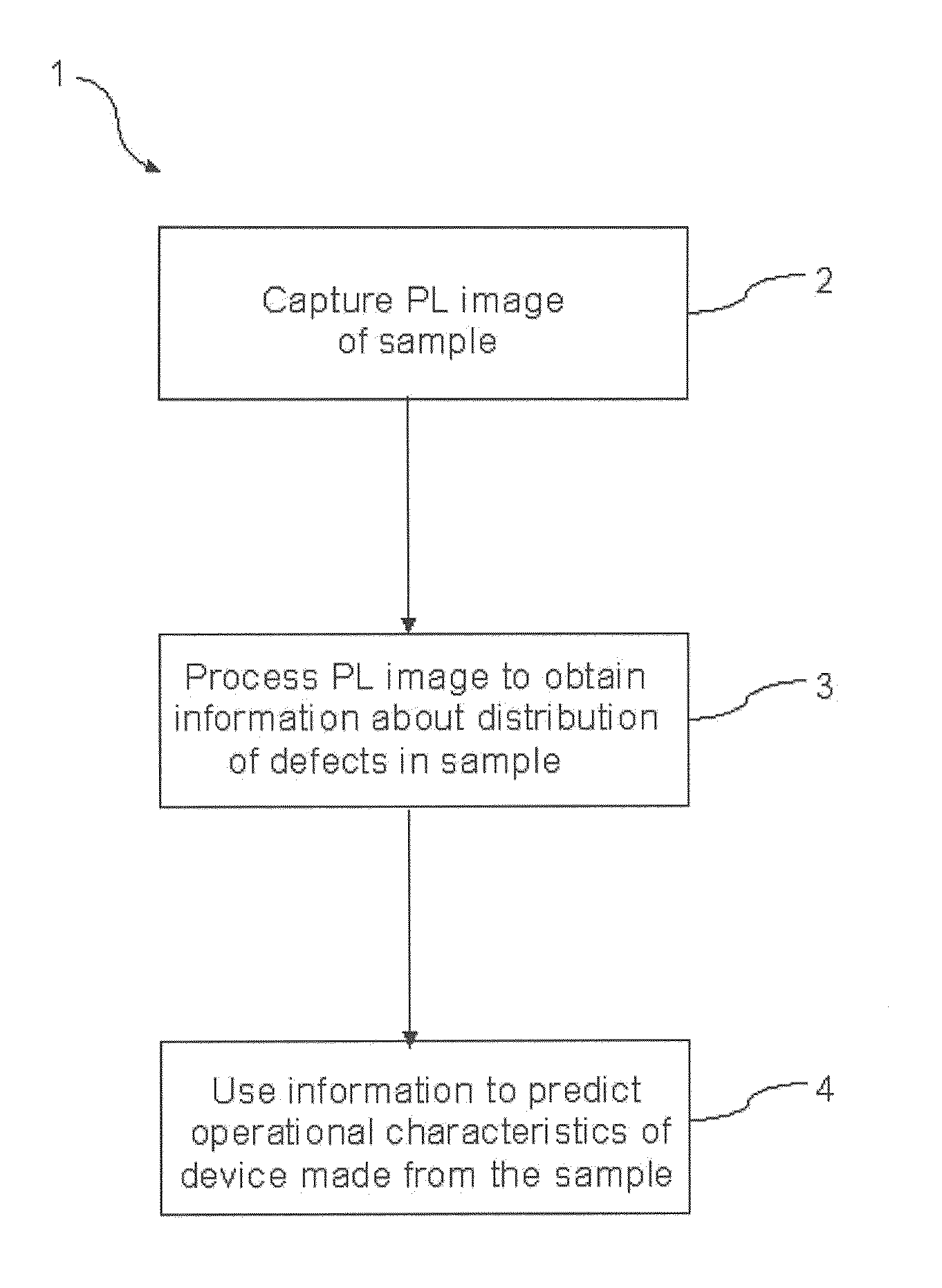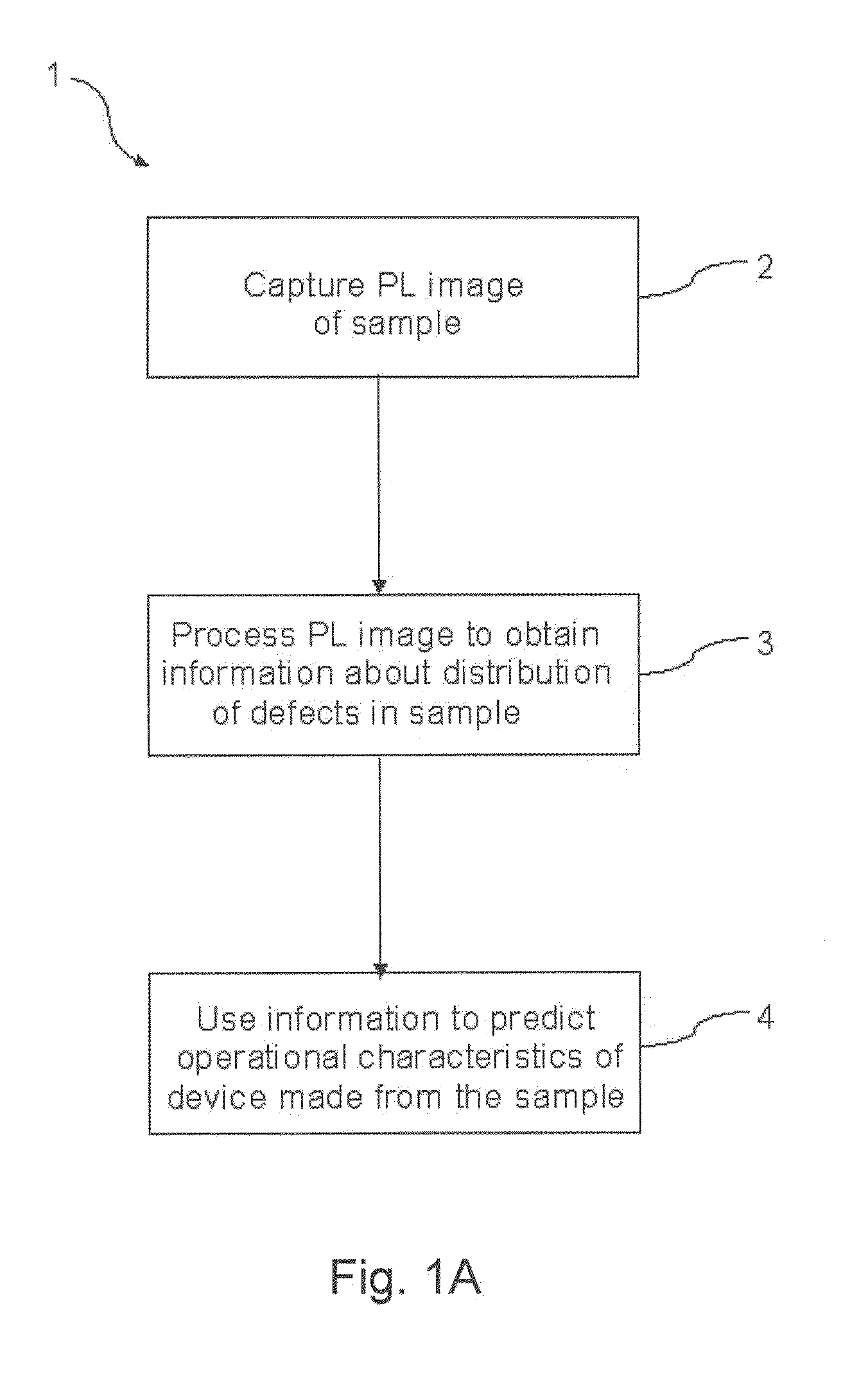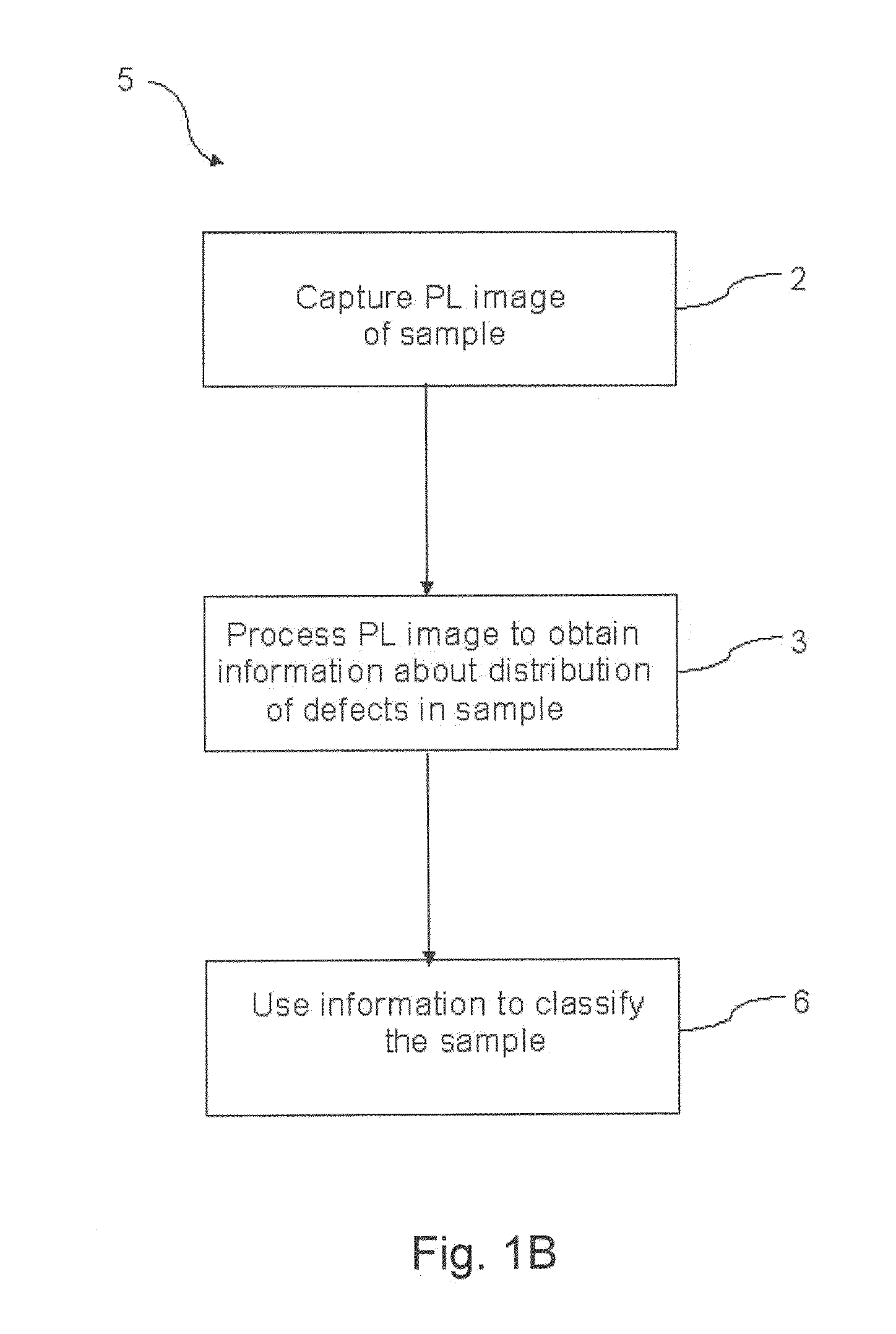Wafer imaging and processing method and apparatus
a processing method and wafer technology, applied in image enhancement, semiconductor/solid-state device testing/measurement, instruments, etc., can solve the problems of limited two-dimensional information about lateral variations of material quality within each wafer obtained, limiting the time available for characterisation, and limiting the time available for in-line characterisation of each sample, so as to improve the quality of the solar cell
- Summary
- Abstract
- Description
- Claims
- Application Information
AI Technical Summary
Benefits of technology
Problems solved by technology
Method used
Image
Examples
Embodiment Construction
[0111]Lateral variations in the electronic material quality of the substrate material (for example a silicon wafer) can have a large impact on key performance parameters of solar cells manufactured from the material, such as open circuit voltage, short circuit current density, fill factor and efficiency.
[0112]The preferred embodiment provides methods and systems that can rapidly assess the quality of raw wafers at the start of solar cell manufacturing or at the end of wafer manufacturing and predict cell performance parameters or statistical variations thereof expected under normal processing conditions. The methods and systems can also be used to assess the effect of additional processing steps, such as annealing, intended to improve the electronic material quality.
[0113]The preferred embodiment includes analysis of photoluminescence (PL) images of a bandgap material, i.e. images of band-to-band recombination luminescence 15 generated by photo-excitation of the material. In alterna...
PUM
 Login to View More
Login to View More Abstract
Description
Claims
Application Information
 Login to View More
Login to View More - R&D
- Intellectual Property
- Life Sciences
- Materials
- Tech Scout
- Unparalleled Data Quality
- Higher Quality Content
- 60% Fewer Hallucinations
Browse by: Latest US Patents, China's latest patents, Technical Efficacy Thesaurus, Application Domain, Technology Topic, Popular Technical Reports.
© 2025 PatSnap. All rights reserved.Legal|Privacy policy|Modern Slavery Act Transparency Statement|Sitemap|About US| Contact US: help@patsnap.com



